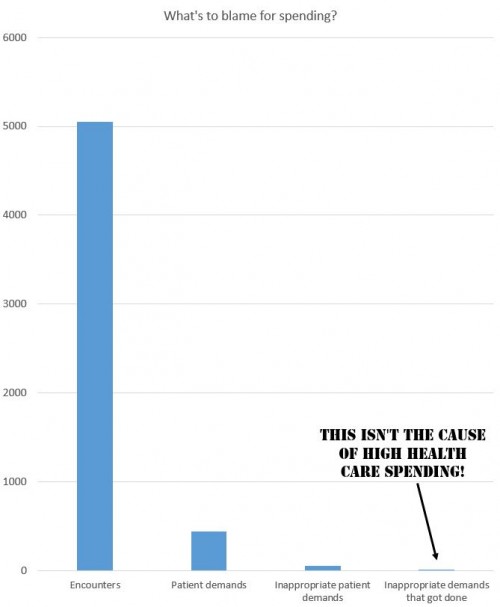I’ve had a ridiculously busy week, and so my blogging has been on the low side. Of course, I did manage to pull out a piece on The Upshot as well as the usual Healthcare Triages, so it’s not like I did nothing. But there were a few papers this week that I thought were worth noting, and so you’ll get a couple quick posts from me highlighting them. First up is “Patient Demands and Requests for Cancer Tests and Treatments“:
Importance Surveyed physicians tend to place responsibility for high medical costs more on “demanding patients” than themselves. However, there are few data about the frequency of demanding patients, clinical appropriateness of their demands, and clinicians’ compliance with them.
Objective To assess how frequently patients demand or request medical tests or treatments, what types they demand, the clinical appropriateness of their demands, and how frequently clinicians comply.
Design, Setting, and Participants Immediately after visits, clinicians—physicians, fellows, nurse practitioners, and physician assistants—were interviewed about whether the patient made a demand or request and their type and appropriateness. Interviews occurred in oncology outpatient facilities at 3 Philadelphia-area hospitals between October 2013 and June 2014.
Main Outcomes and Measures The 4 main outcomes were (1) frequency of patient demands for medical tests or treatments, (2) the types of tests or treatments demanded, (3) clinicians’ assessment of the clinical appropriateness of the demands, and (4) how frequently clinicians complied.
Researchers looked at more than 5000 oncology encounters involving more then 3600 patients and 60 clinicians. Just under 9% of them involved a patient demand or request for a medical intervention. But about 83% of these “demands” were clinically appropriate. Only 11% of them were actually clinically inappropriate.
But all these percentages of percentages miss the fact that a clinically inappropriate intervention was asked for in only about 1% of encounters. Moreover, doctors complied with only 14% of the inappropriate demands. So in only 7 out of 5050 encounters did a clinically inappropriate intervention get done because a patient demanded it.
Screw the “quick post” idea. This needs a chart:
Let’s acknowledge that the vast majority of patient “demands” are clinically appropriate, which begs the question as to why they needed to “demand” them. Let’s also acknowledge that a very, very small number of inappropriate demands exist, and a tiny percentage of them get done. They’re not the reason we spend too much on health care in the US, likely.
For more on this, you might enjoy my Upshot piece which discussed how the inappropriate use of antibiotics can’t be blamed entirely on patients either.


